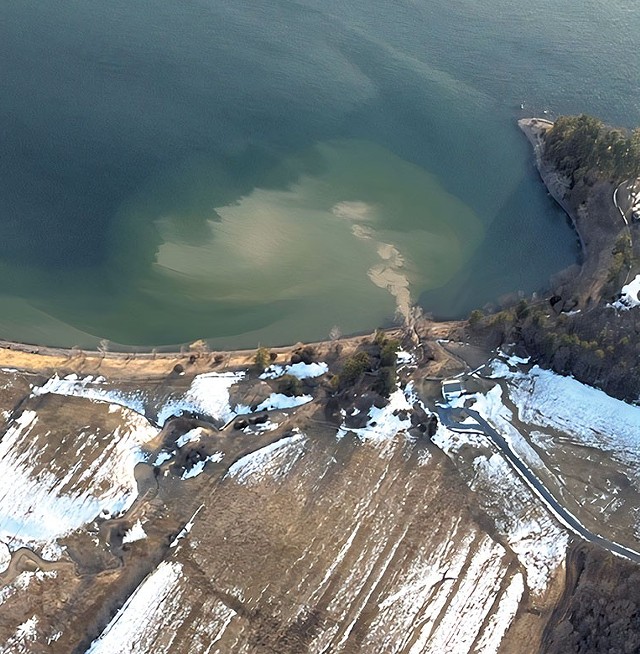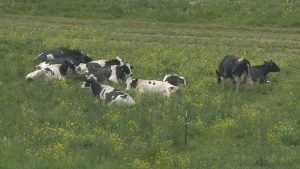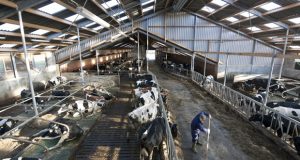
The agency says it will enforce the Clean Water Act in Vermont itself — unless the state does a better job.
Federal regulators have again told Vermont fix its problematic and lax regulation of pollution from dairy farms.
Vermont divides the responsibility for addressing farm pollution between its environmental and agricultural regulators. That system has failed to fix the problem, which violates the federal Clean Water Act, the U.S. Environmental Protection Agency told state officials last week.
The only solution is to consolidate regulation into a single program within the Department of Environmental Conservation, according to a September 6 letter to the state from David Cash, the administrator of EPA’s New England region. That would effectively eliminate the role of the state’s Agency of Agriculture, Food and Markets in this arena.
The EPA has allowed the state to handle enforcement of the Clean Water Act since it became law in 1972. The Conservation Law Foundation argued that the state has so bungled that job that the feds should take that responsibility back. The EPA now says it will do so — unless the state consolidates the job under a single agency.
The CLF hailed the move.
“I think it’s hard to overstate the monumental nature of EPA’s action,” said Elena Mihaly, vice president of CLF Vermont. “Water quality advocates have been trying for decades to point out the broken system of the status quo and how it disadvantages water quality and is not good for farmers.”
The Agency of Agriculture has long regulated pollution from fields, called non-point source pollution. The Department of Environmental Conservation, meanwhile, is responsible for regulating water pollution from specific sources, such as barns, manure pits, pipes and ditches.
Many farms release both types of pollution, and the overlapping jurisdictions create tension, confusion and delays for all involved, Natural Resources Secretary Julie Moore concluded in 2021. She proposed moving the 15 agricultural inspectors to her department, creating a single enforcement division for farms.
The idea went nowhere, but water quality advocates took note. Jon Groveman, the policy and water program director for the Vermont Natural Resources Council, kept pushing for the change. He hailed the EPA’s decision.
“The restructuring called for by EPA’s letter is complex and will take time, but VNRC is grateful that EPA has recognized that change is needed to fully restore and protect Vermont’s waters,” he wrote in a statement.
When CLF asked the EPA to intervene, it cited examples in which Agency of Agriculture regulators responded too slowly or not at all to a pollution report. In some instances, the regulators identified problems from a specific point on a farm but never referred the case to colleagues at DEC who had jurisdiction.
In 2020, neighbors of Vorsteveld Farm, one of the largest dairies in the state, filed a lawsuit against it claiming that polluted water was flowing from its fields in Panton onto their property — and then into Lake Champlain. The neighbors prevailed at trial in 2022.
“The Agency of Agriculture utterly failed to address the environmental problems here,” the neighbors’ attorney, Rob Woolmington, told Seven Days after the decision. “It required the court to do the job the agency should have done.”
Many water quality advocates have suggested the agriculture agency’s dual mission to enforce regulations while also promoting the dairy industry has made it hesitant to force changes on problem farms. Agriculture officials have maintained their efforts have led to significant reductions in pollution flowing into Lake Champlain.
“We’re quite proud of not only the work that our agency is doing on water quality on farms but more importantly the work that farmers have been doing,” Steve Collier, general counsel for the Agency of Agriculture, said. Collier noted that while the EPA appears focused on discharge permits for large farms, the agency has a far broader mission to help all farmers fix pollution problems.
Mihaly said the reality was, and EPA’s own investigation found, that the division between regulators was unhealthy for the farmers and the environment.
“We believe farmers were getting caught in the middle between these two agencies,” she said.
Moore, the ANR secretary, stressed that the vast majority of farmers in the state are doing what regulators ask of them and are helping reduce water pollution. She said she’s not sure how the regulation of farms will change in the state, but the EPA has given her just 90 days to figure it out.
“That letter makes is abundantly clear that they do not find the status quo acceptable and that some amount of change is necessary,” she said.
You can now read the most important #news on #eDairyNews #Whatsapp channels!!!
🇺🇸 eDairy News INGLÊS: https://whatsapp.com/channel/0029VaKsjzGDTkJyIN6hcP1K
























